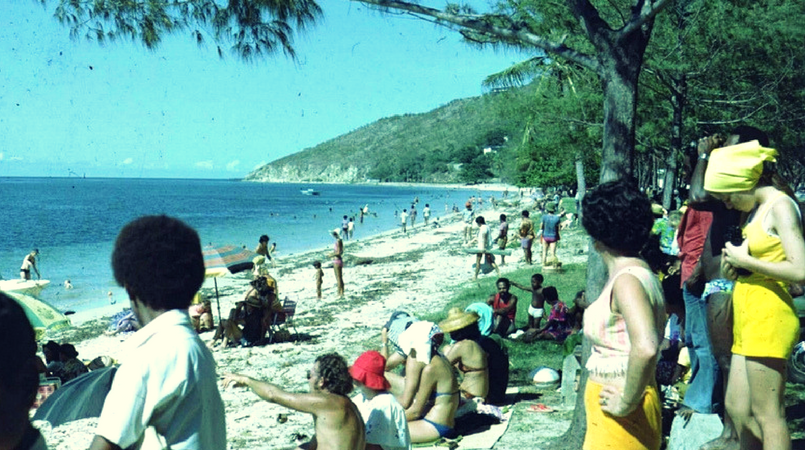
Each generation will remember Ela Beach differently.
The current generation will remember it as the place of weekend entertainment, the next generation will probably see it as a big recreational park. But for those before 80’s kids, Ela Beach means much more.
Christopher Tava (born late 80's) is one, who over the years, saw Port Moresby’s magnificent beachfront lose its natural beauty.
“Ela Beach is not as beautiful as it was back in the days when it was a turtle beach,” he posted on his Facebook account.
It was formerly known as Era Kone, meaning 'Turtle Beach' in the Motuan dialect.
And as Tava remembers, turtles would lay eggs along the beachfront.
Those from his generation would agree that the beach was alive with turtles, star fish and other marine life.
Local Motu-Koita people held annual Hiri Moale Cultural Festival to celebrate the ancient Hiri trade voyages that used to be launched from Era Kone (era means “turtle” in Motu and “canoe” in Koita).
A local, writing to one of PNG’s daily in 2015, spoke of this.
Babani Maraga wrote:
“The waterfront opposite Mobil Service Station is the actual location where ‘era’ (canoe) hulls were dug out from ‘irimo’ trunks, soaked and dried on site. It was virtually a boat building assembly line.
“The sandy beach from midway till the old Sea Park area hosted the seasonal egg-laying sites for ‘era’ (turtles).
“Even more exciting is the loading and launching of our infamous ‘lagatoi’ (big double-hull) trading vessels often in regatta style with glorious singing and dancing to farewell departing masters with well drilled crews.
“All nearby villages took part with pride and sacred rituals. The reception for the returning lagatoi is a massive celebration that goes on for days.”
A few things today give us a picture of the past. The original Casuarina trees were actually planted to mark the proposed Port Moresby to Rona (Rouna) railway in 1914. Ela Beach would have been the starting point but the First World War stopped the railway works.
It was also used as a landing ground for the first aeroplanes in Port Moresby until Kilakila airstrip was made.
The beachfront also housed many government offices and facilities after the Second World War (later relocated).
As painful as it is, some say development must take place.
Ela Beach is currently undergoing redevelopment works to extend the landmass a few metres out.
The ground turned inside out, burying the stories of the past with the sand but will remain in the hearts of many.
“I’m sad to imagine that my children would not see Ela Beach the way I saw and enjoyed it growing up. It will only be a story now to my kids when they grow up,” Tava said.
(Ela Beach in 1975: sourced moresbyhistory)
